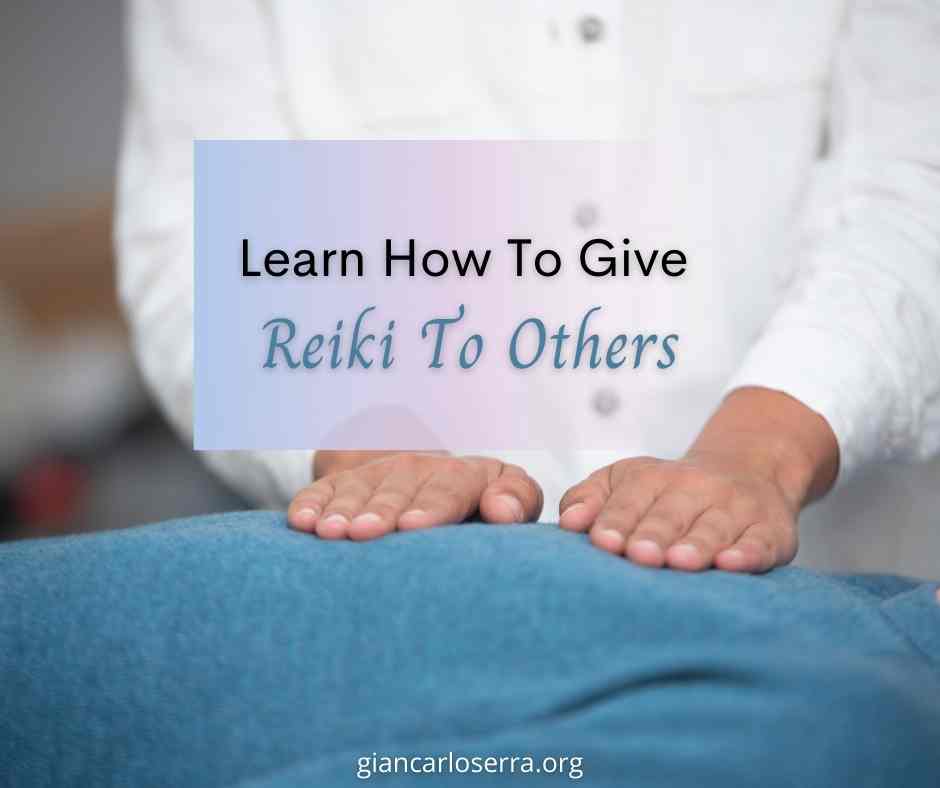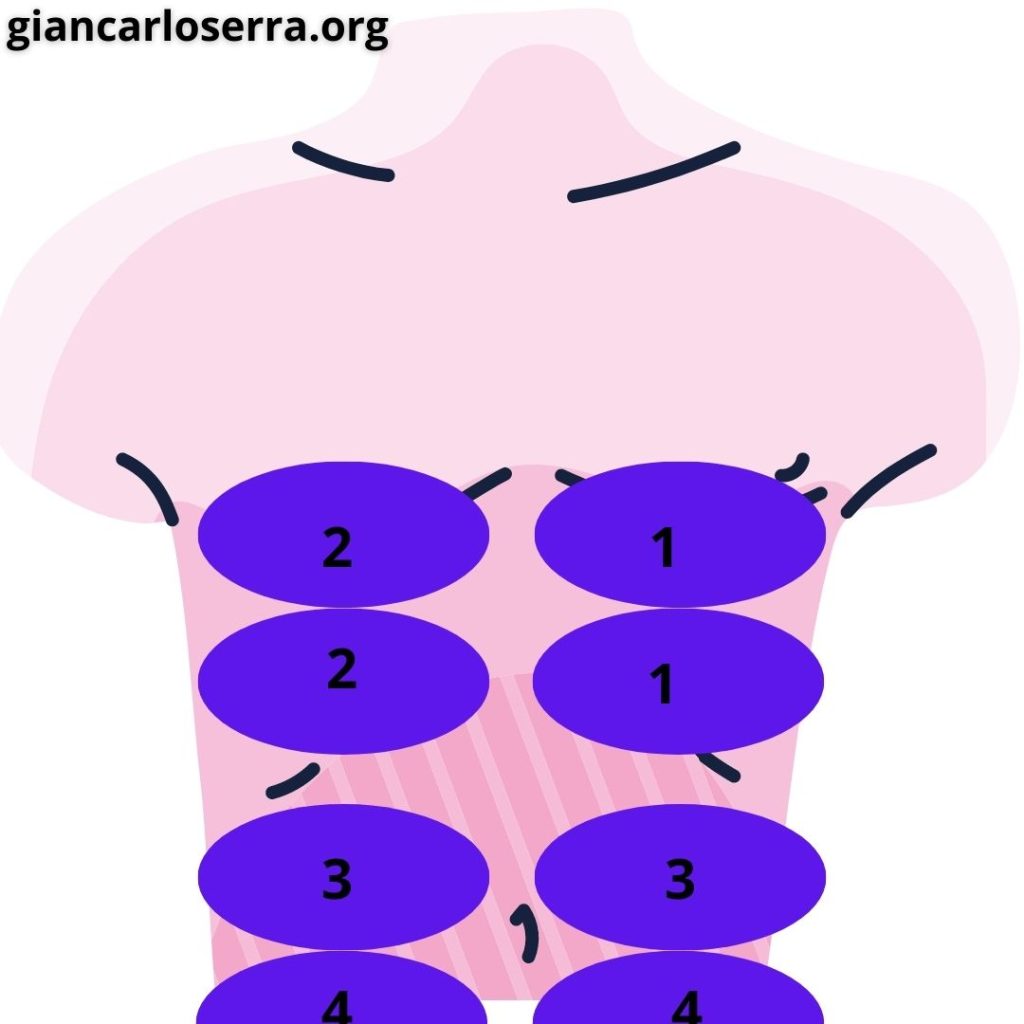
Learn How To Give Reiki To Others
What Is Reiki?
“Everything that exists in the Universe possesses Reiki. Reiki is the Universal energy, the source of all existence, the hado of Love and the pure Light that comes from a higher dimension” – Usui Sensei
Reiki has its roots in ancient Buddhism and Shintoism. Many consider that Mikao Usui was the creator or Reiki and that the word Reiki applies only to the healing system that he created and developed. However, research found that prior to Mikao Usui developing his style of Reiki, there were at least four other styles of Reiki healing that were being practiced in Japan (William Lee Rand, Reiki: The Healing Touch).
Mikao Usui developed his system of healing in 1922 and called it Usui Reiki Ryoho (Usui Reiki Healing Method). In Japan, the ‘Usui Reiki Ryoho Gakkai’ founded by Mikao Usui has been teaching his system ever since.
Reiki is practiced by millions of people worldwide and there are over one hundred styles that have evolved from the system developed by Mikao Usui.
The Complementary and Natural Healthcare Council in the United Kingdom defines Reiki as:
“Reiki” (ray-key) is Japanese for ‘universal life energy’, a term used to describe a natural system to help bring about an improved sense of well-being and a positive feeling of spiritual renewal. This tradition was founded by Dr Mikao Usui in the early 20th century and evolved as a result of his research, experience and dedication. It is a tradition that is open to any belief system and benefits may include deep relaxation and the promotion of a calm peaceful sense of well-being.”
Healers Are Transmitters of Pranic Energy
One of the most important rules says healers are channels for the healing energy, whether they are channelling prana, Ki, Reiki, spiritual healing, or other forms of healing energies.
Healers do not create healing energy within themselves, do not take it from other people or from a random source of energy. They do not push, manipulate, interfere nor they use their mental energy to create the results they want for themselves or for the client.
An attachment to results is itself mental energy that can interfere with the healing process and even counteract the healing benefits of the session.
Healing And Curing
Psychical symptoms are the results of something that is happening on a much deeper level. They are the ‘tip of the iceberg’. Western medicine aims at relieving these symptoms, which often bring results. However, western medicine is often concerned with dealing with removing the symptoms rather than dealing with the cause.
Releasing or eliminating the symptoms often leaves the source of the problem untouched. How medicines work often equates to covering a pot of boiling water with a lid. We all know that the pressure generated will soon be too much to be contained inside the pot. The only way is to turn the gas down, reducing pressure.
The first difference between healing and curing is that curing is more concerned with physical, emotional, and mental symptoms, while healing focuses on the cause. Healing is not concerned with the symptoms, because as soon as the cause of the illness is understood and healed, the symptoms often (but not always) disappear.
Caroline Myss is a world-renowned medical intuitive, author, and speaker in the field of health and healing, writes in her book Anatomy of the Spirit:
“Healing begins with the repair of emotional injuries. Healing is an active and internal process that includes investigating one’s attitudes, memories, and beliefs with the desire to release all negative patterns that prevent one’s full emotional and spiritual recovery.”
How To Prepare For A Reiki Session
There are many ways to prepare for a session and I would certainly encourage you to find your way. Here is a list of ideas to take into consideration based on my own experience and training received.
It is important to know how you can best prepare for a Reiki session so that you are grounded, centered and your client can receive the most benefits. This preparation involves your own preparation as well the preparation of the space where you are going to have the Reiki treatment.
Give yourself at least 30 minutes prior to the session to sit, meditate, give yourself healing and prepare the room.
If you are the beginning of your working day and you are getting ready for your first Reiki treatment, you probably need more time, perhaps one hour or even more.
In between session you still need time to make notes in relation to your previous session, to clear your energy and the energy of the space, and to prepare for your next client.
Create the right atmosphere
Creating the right atmosphere in which to give Reiki does help to enhance the experience. Ideally, when you are giving someone else a Reiki treatment you should have a quiet, comfortable and soothing environment in a designated room or area and find somewhere you will not be disturbed.
You might want to make the experience special by having a candle burning there, and playing appropriate music to suit the mood. Some people like to burn incense or use essential oils, but it’s probably best to make sure that your client actually likes the smell of the fragrance before you fill the room with it.
Using a space clearing spray before a Reiki treatment is also recommended and it’s a good, easy way to improve the energetic quality of the space in which you are working.
Give Yourself Reiki Healing
Takata Sensei always taught her students to start their healing practice with themselves, providing Reiki self-treatments daily. Before you can help others to heal, you must first heal yourself.
Even if you only have five minutes per day, use that time to place your hands on yourself and allow the Reiki energy to flow. This will not only help you master the skills needed for Reiki, but it will help to keep your energy flowing freely and improve the health of your body, mind, and spirit
Whenever possible, perform a full Reiki self-treatment, which includes 16 hand positions. Hold each hand position for three to five minutes. Therefore Reiki is a discipline – because to help others heal you must have the discipline to put in the time and practice to heal yourself.
Make sure you are comfortable
It’s a good idea that both the Reiki practitioner and the recipient should wear comfortable loose clothing, take off their shoes, their watches and remove any jewellery that might inhibit the free flow of energy. If the receiver wears glasses, ask them to remove them before the treatment.
Hygiene
Hygiene is also important, especially if you are treating someone you do not know.
Always wash your hands before and after a Reiki treatment. Try and keep your breath fresh, so maybe suck a mint or clean your teeth beforehand, especially if you have been eating spicy or garlic laden foods, or are a smoker.
Reiki treatments
Treatments can be given with the recipient either sitting in a chair or lying down on the floor, a mattress, a futon or even a treatment couch. Make sure they are comfortable by placing pillows under the head of the recipient and also under the knees if they find this a comfortable way to relax their legs. Some people may want a blanket as there are often variations in body temperature when receiving Reiki.
It is also very important for you as the practitioner to be comfortable as well. Pay particular attention to your posture. If you end up giving a few treatments a day and are not taking care of your spine, then you will notice it very quickly.
For the treatment itself you should take a few moments to prepare yourself energetically and mentally. You might wish to spend a few minutes doing the shower of light technique.
Alternatively you can simply carry out another simple grounding exercise by imagining your feet firmly rooted to the floor and feeling your connection with the planet (it doesn’t matter if you live on the fifth floor of a block of flats as energy follows thought).
> Practice Gassho Meditation before a Reiki session
Then imagine a beam of light extending from your heart chakra down your spine, out of your body and all the way down into the earth, going all the way down into the very centre of Mother Earth. Feel or imagine that energy anchoring down in the centre of the Earth and bring it all the way back up into your heart chakra and feel the grounding energy coming up into your body.
Imagine or see a beam of light extending from your heart chakra up your spine and out the top of your crown chakra, up through the ceiling, up through the rest of the building and then out through the sky and the Earth’s atmosphere and out into the Universe.
Connect and ground
Intend to connect with the Highest Source of Reiki, feel or imagine and then intend the connection and allow the Reiki energy to come back down your beam of light and into your heart chakra and allow it to mix with the grounding energy.
You might like to say a prayer and/or call upon the assistance of Dr. Usui, Dr. Hayashi, Hawayo Takata and other high level Reiki guides to help making this treatment a success for the receiver’s highest good.
Then feeling grounded, protected and connected with Reiki you can begin the treatment by brushing down the receiver’s aura from the head to the feet two or three times. Whilst doing this keep your fingers together to keep the energy focussed and intend to clean the recipient’s aura.
Proceed with giving them Reiki. Whether you use Reiki in a hands-on or hands- off manner is a matter for your discernment and you and your client to discuss.
You can either touch the receiver lightly or hold your hands a few inches above their body, staying in each position for between one and five minutes. At first, you might find some of the hand positions a little tiring, so you can start off with a shorter amount of time if you need to and progress upwards.
Both the recipient and the practitioner should keep their legs and arms uncrossed to ensure the free flow of the energy and the practitioner’s feet should always be connected to the ground.
During the treatment, no conscious effort must be made. You have already intended that the treatment is for the recipient’s highest good and just maintain this intention throughout the treatment. You can also “tune in” to the recipient if you like and notice what you notice, but always without judgement. If your mind wanders off, just gently bring it back to your present experience of the flow of Reiki.
Beaming Technique
This technique was developed by the International Center for Reiki Training and allows practitioners to channel and beam Reiki energy to a client. Practitioners can activate the distant symbol HSZSN and beam Reiki energy to a client from across the room.
The client can be sitting on a chair or lying on a Reiki bed. It is a technique that can be use at the beginning/end of a standard treatment or it can be done by itself.
As always, the practitioner’s intention is the main catalyst in this process. Reiki is channelled and beamed to the aura of the client, even from four/five metres away. Beaming substantially increases the energy exchanged between the practitioner and the client, treating the whole aura, and activating a unique healing process.
Hand Positions for a standard treatment
During a Reiki standard treatment, the receiver is lying down, first on their back, then on their front. A full standard treatment may take anywhere between 1 to 1.5 hours depending on the requirement and the method of working.
THE FRONT OF THE BODY
From behind the head:
1) Cover eyes and cheeks, Third Eye Chakra
2) Cover temples and jawbones
3) The back of their head rests in your hands, Third Eye & Crown Chakra
4) Hold your hands above the throat area, Throat Chakra
From the side:
5) Upper chest, Heart Chakra
6) Lower chest, solar Plexus Chakra
7) Abdomen, Sacral Chakra
8) Lower abdomen, pubic bone, Root Chakra
9) The knees
THE BACK OF THE BODY
From behind the head:
10) The crown, Crown Chakra
11) Neck and upper shoulders, Throat Chakra
From the side:
12) Shoulder blades, Heart Chakra
13) Lower lungs & kidneys, Solar Plexus Chakra
14) Lower back, sacrum, Sacral Chakra
15) Coccyx, Root Chakra
16) The back of the knees
The receiver lying on their back again
17) The ankles.
18) Top and bottom of the feet.
Remember: a Reiki Practitioners are not a medical professional, therefore it is not appropriate to diagnose illnesses, unless they are a medically qualified.
Hawayo Takata’s Foundation Treatment
Mrs. Takata brought Reiki to Hawaii in 1938, after receiving Reiki 1 and Reiki 2 training from Hayashi Sensei during a yearlong internship at his clinic in Japan. She was a successful healer and business woman, and she taught Reiki for over 40 years, until her passing in 1980.
Hawayo Takata simplified the Usui system and developed her own hand position system, which she called the foundation treatment.
This consisted of eight hand positions, which were on: the abdomen, the shoulders and head.
– Four basic positions for the torso.
– Three positions for the head.
– No positions over the heart or on the back, which were optional.
– Additional positions for the back if the client would be included, if needed.
> Hawayo Takata’s Foundation treatment
The end of a Reiki treatment
The end of every treatment should be on the final position (number 18) which is the recipient’s feet. This should always be a hands-on position and you should use your intention to ask that they are fully grounded.
Give the recipient a few minutes to come to. They may have been asleep or awake (there is no right or wrong here) but in either case they will hopefully have been deeply relaxed, so let them come to slowly, maybe have a stretch and if possible offer them a glass of water.
Before you let them out into the wide world, talk to them for 10 minutes or so, firstly to discuss their experiences and also to make sure they are sufficiently back with the programme to go off and do whatever it is they have to do next.
Reiki treatments vary from person to person, but in my own case for an hour’s treatment, I will have a 10 or 15 minute chat at the start followed by 30-40 minutes Reiki, which is then followed by another 10-15 minutes talk at the end.
Healing Reactions After A Reiki Treatment
After a session with a Reiki practitioner, a person may go through a healing process in which energy is released from the physical, emotional, mental or spiritual levels. As this energy is being channeled, it must travel through and be released from our system as blockages are removed and patterns dissolved.
This healing process can sometimes cause uncomfortable symptoms that are part of the recovery process. This is sometimes called a ‘healing crisis‘ by some, but is actually a normal part of the healing process as we enter a more deeply healed state. The length of a healing crisis can be a few hours up to a few days.
Healing can also take place on higher levels affecting emotions and the mind. When deep-rooted emotional patterns are dissolved, some people may become mentally and emotionally vulnerable; nothing seems to go right for them and they find it difficult to function in the life they previously had.
Giancarlo is a fully qualified Spiritual Healer, Reiki Master, Hypnotherapist and Past Life Regression Therapist.
He is a Master Teacher member of the UK Reiki Federation and registered with the Complementary & Natural Healthcare Council, Federation of Holistic Therapists, the Spiritual Regression Therapy Association and the General Hypnotherapy Register. Read more.






































